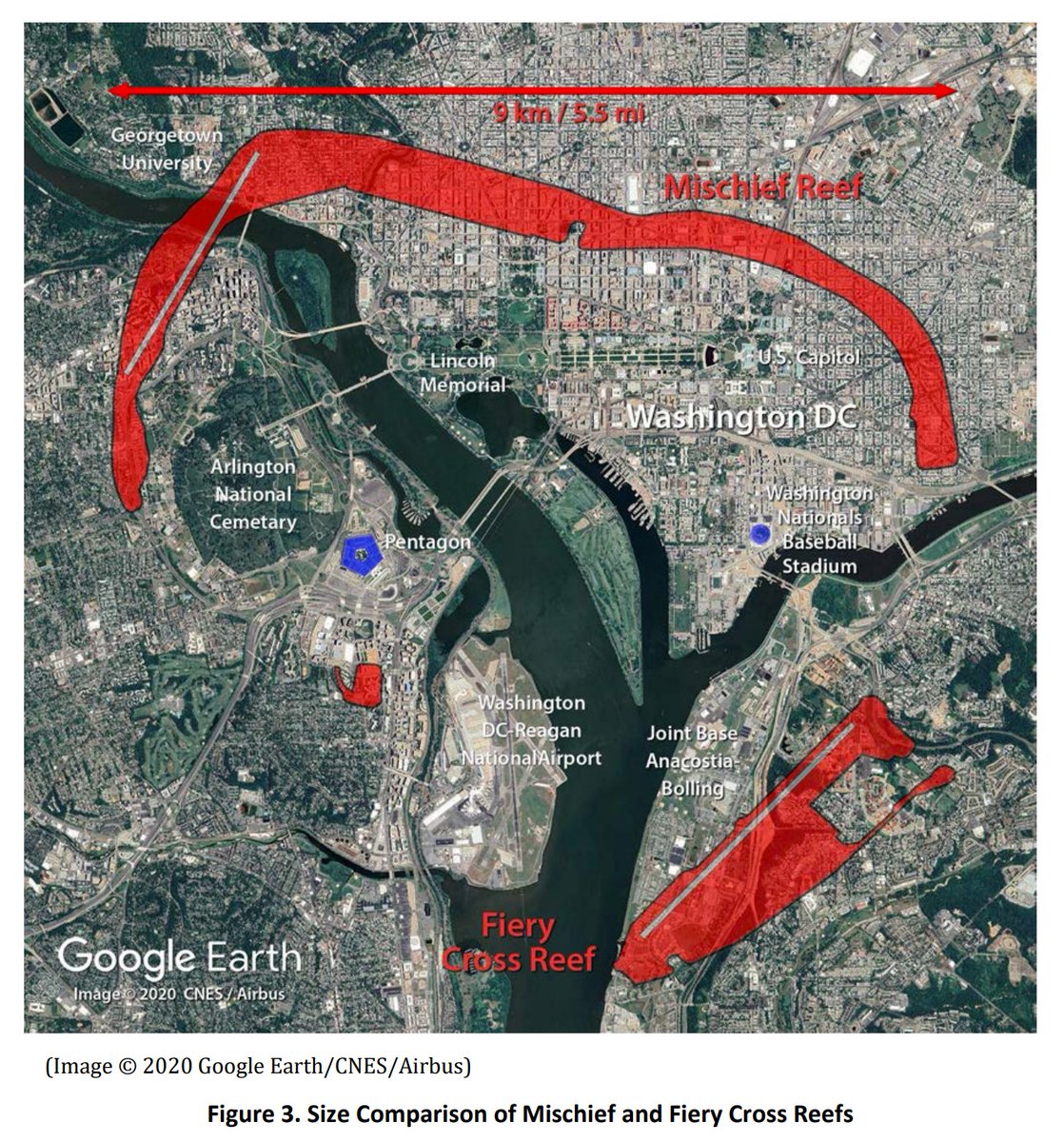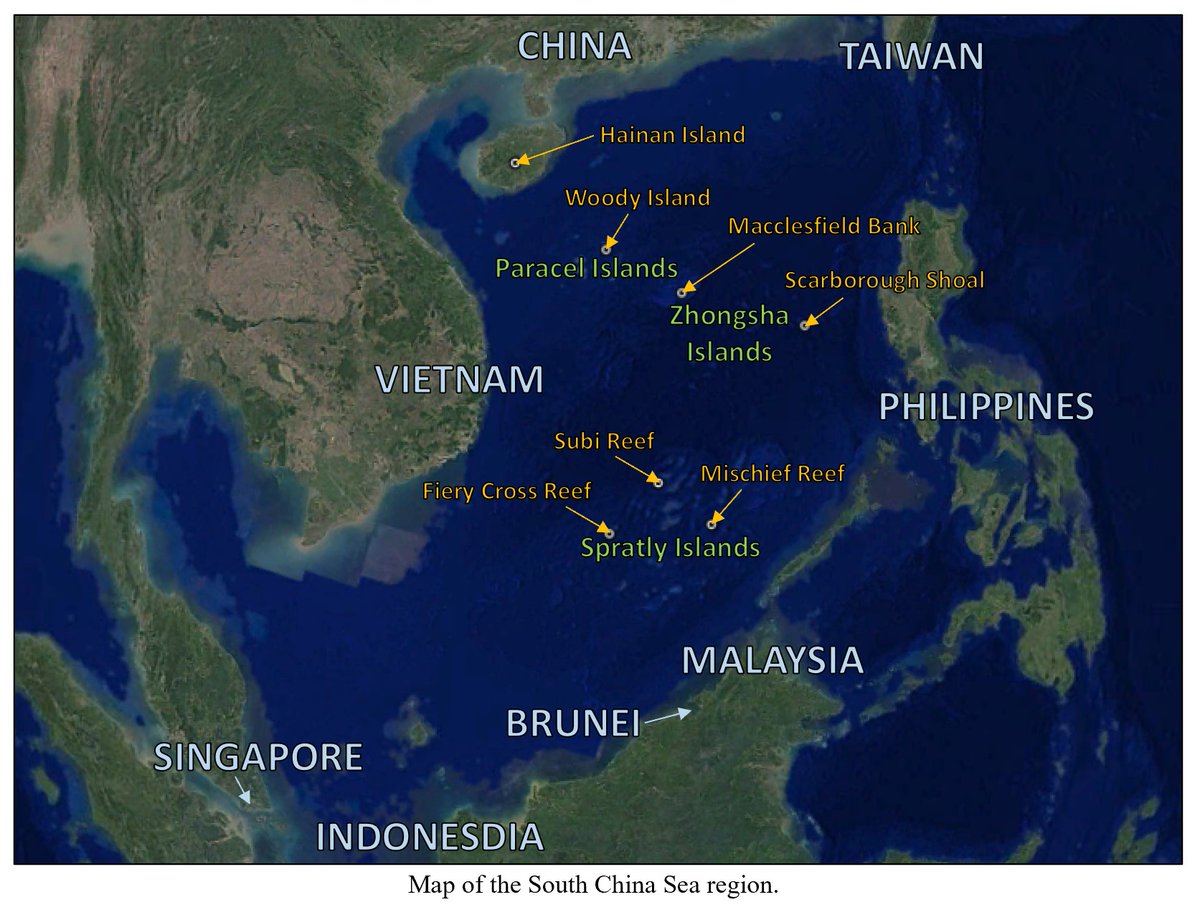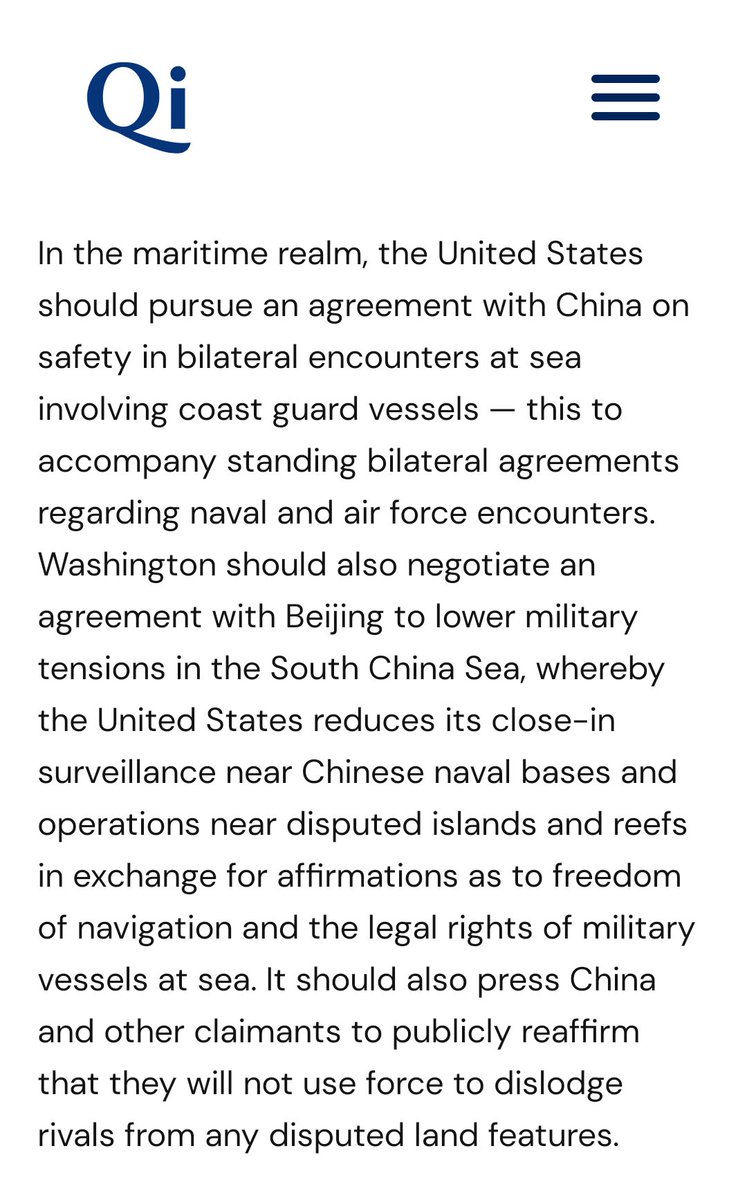
I found that the Chinese government trademarked the entire South China Sea in 2014, filing thousands of trademark applications covering 281 specific rocks, reefs, and regions – including features already occupied by other countries.
Thread: (1/) benarnews.org/english/news/p…
Thread: (1/) benarnews.org/english/news/p…
Each of these trademarks is composed of the feature’s name in stylized Chinese calligraphy and is categorized under one of 45 international trademark classes. All of the trademarks belong to Sansha City, which administers China’s claims in the South China Sea. (2/)
Many also have an English transliteration of the feature’s name and an illustrated logo. These are the trademarked names and logos for Mischief Reef, Fiery Cross Reef, Subi Reef, and the entire Spratly Islands. (3/) 

As mentioned above, China also trademarked numerous rocks and reefs controlled by other claimants, like Taiwan-occupied Itu Aba, Philippines-occupied Thitu Island, and Vietnam-occupied Sin Cowe Island. (4/) 

At least one of the trademarks is being used in the real world. The trademarked “Sansha” logo can be spotted on Sansha City’s supply ships, its website, and podiums used by the municipal government. (5/) 

According to Chinese state media, “applying to register trademarks for the names of Sansha City’s islands and reefs in accordance with China’s ‘Trademark Law’ was the most direct embodiment of declaring sovereignty.” (6/)
Sansha City also registered these trademarks to “protect the geographical name ownership of each island, reef, shoal, and island” and “prevent trademark squatting.” (7/)
I talked with @julianku about what this all means. Turns out that the trademarks could potentially help the PRC government wield lawsuits to control how Chinese and foreign companies use South China Sea branding, though the legal strength of these trademarks is questionable. (8/)
We also reached out to the authorities in Vietnam, the Philippines, Taiwan, and Malaysia. Officials in both Taiwan and Vietnam gave us statements rejecting the trademarks. (9/)
• • •
Missing some Tweet in this thread? You can try to
force a refresh










